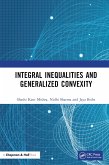
10,95 €
Sofort per Download lieferbar

Gebundenes Buch
Trying and Sentencing Juveniles as Adults
5. September 2000
Praeger
| eBook, PDF | 39,95 € |
Ähnliche Artikel

eBook, ePUB
17. April 2018
Taylor & Francis

11,95 €
Sofort per Download lieferbar

8,95 €
Sofort per Download lieferbar

eBook, ePUB
23. März 2017
Dover Publications



eBook, ePUB
18. September 2023
Taylor & Francis


eBook, ePUB
15. Oktober 2024
Taylor & Francis

14,95 €
Sofort per Download lieferbar
eBook, ePUB
4. Mai 2012
Guilford Publications
Ähnlichkeitssuche: Fact®Finder von OMIKRON
